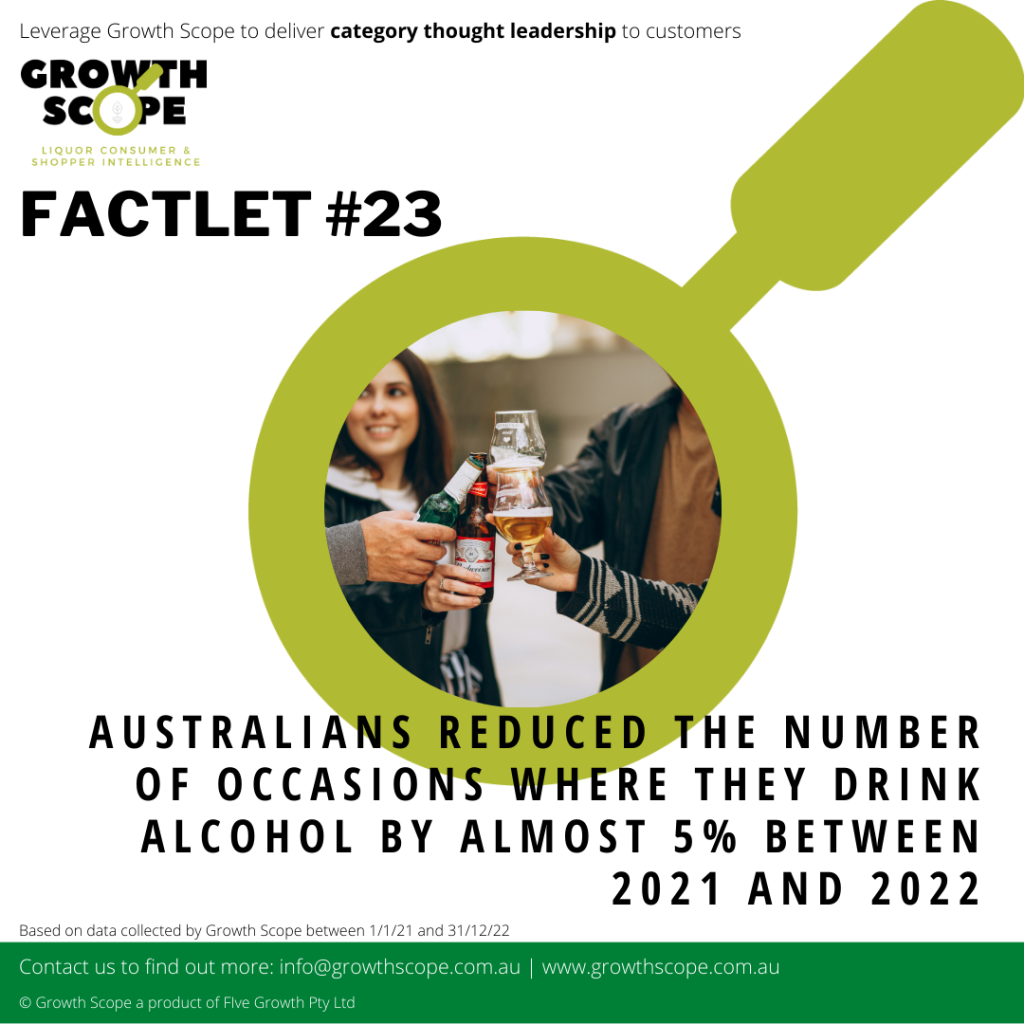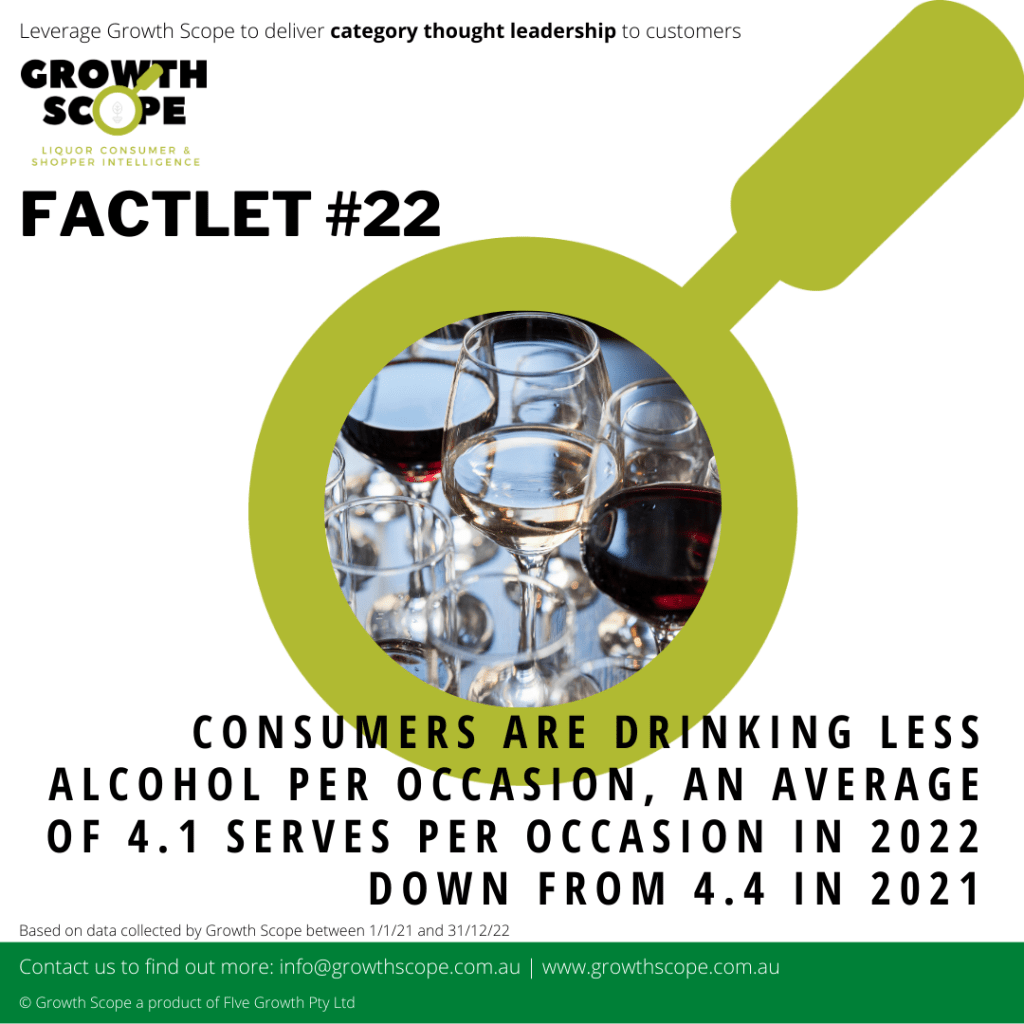Recent data from Growth Scope has uncovered some changing consumer habits when it comes to occasions.
Within its Factlet series via LinkedIn, Growth Scope revealed that in 2022 (compared to 2021), Australian consumers reduced the number of occasions where they drink alcohol, and were drinking less alcohol per occasion as well.
Mel Anderson, Director of Research and Product at Growth Scope, said it’s important to step through the specific numbers to understand the significance of the impact that these stats can have. She noted that of the roughly 18.4M adult population (aged 18+) in Australia, NHS data indicated 79 per cent who say they consume alcohol, leading to a pool of about 14.5M people.

“The Growth Scope data shows that the average number of drinking occasions per person has declined by almost five per cent between 2021 and 2022 (Factlet #23 above). When considering the average number of occasions per year per person and multiplying the decline out across the ~14.5M adult Australian alcohol consumers, this equates to just under 85 million fewer consumption occasions in 2022 than there were in 2021,” Anderson said.
“Taking this a step further, Growth Scope Factlet #22 (below) highlighted that the average number of serves of alcohol consumed per occasion declined from 4.4 serves in 2021 down to 4.1 serves in 2022. Applying this across the number of occasions that occurred in each respective year, this results in a whopping one billion fewer serves of alcohol consumed in 2022 than in 2021!”

This doesn’t mean that all occasion types experienced the same declines, nor did all drinks categories see the same impacts. Anderson said some pockets of occasions have actually experienced growth. Then from a category perspective, beer and red wine were most impacted, however not all sub-categories or varietals were impacted to the same magnitude.
A key thing to note with this data is that is across both the on- and off-premise, considering the market as a whole. But it does indicate why seemingly small changes on a few different metrics can create significant impacts on the industry overall.
Andrew Nowicki, Director at Growth Scope, said it’s important for the wider liquor industry to take note of these small changes accordingly, as it can reveal what consumers are most looking for.
“This trend that we have witnessed, results from a change in consumption occasions for liquor, post-COVID restrictions. More friends occasions and less family occasions, more on-premise socialising and less at-home socialising, more get togethers, less meal occasions. This affects both the volume being consumed, but also the categories being consumed. For example, less meals means less red wine,” Nowicki said.
“Looking forward, the fear of a recession coupled with high levels of inflation will create a different headwind. In recent consumer sentiment studies prepared by the Boston Consulting Group, we can see that their research suggests that consumers of liquor are more likely maintain their volumes, but trade down to lower cost options. If this were to play out, it could manifest as a retreat from the more expensive on-premise occasion to more at-home occasions.
“Retailers need to keep abreast of changing consumer occasions and their impact on which categories, formats, and pack sizes best target the growing occasions. This [can] ensure that they have the right product mix in stock and on promotion at the right time. They also need to keep abreast of the shoppers’ willingness to pay for different occasions, so that they can maximise their pricing and revenue management outcomes from trading.”
This is why Growth Scope tracks consumer occasions, the products consumed on those occasions and the consumer and shopper needs relating to them. The platform, operated by Five Growth, aims to “lift the fog in the market” to give suppliers and retailers an understanding of how consumers are behaving, allowing them to target consumption occasions with the right product, at the right time, in the right place and at the right price.
The Growth Scope Factlet series continues each week on LinkedIn, uncovering key quick stats on the habits of shoppers and consumers.

